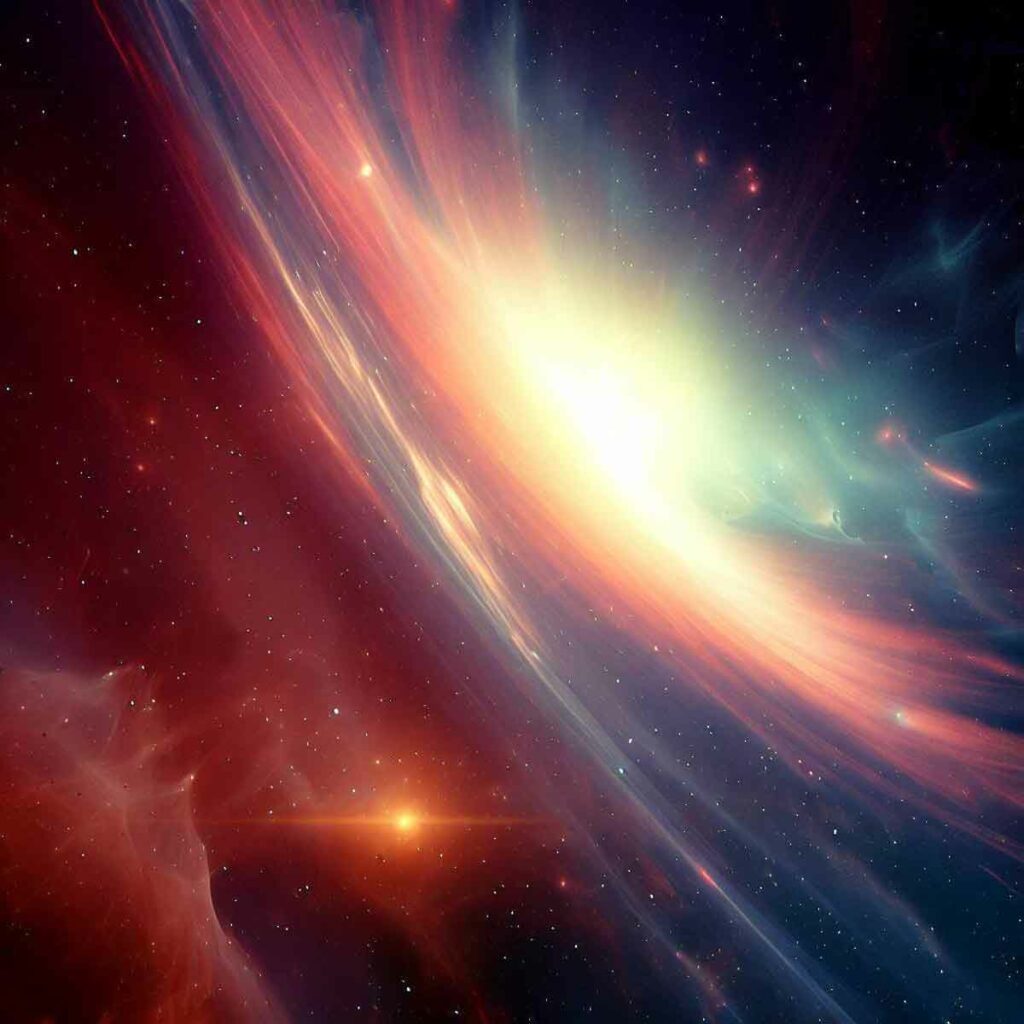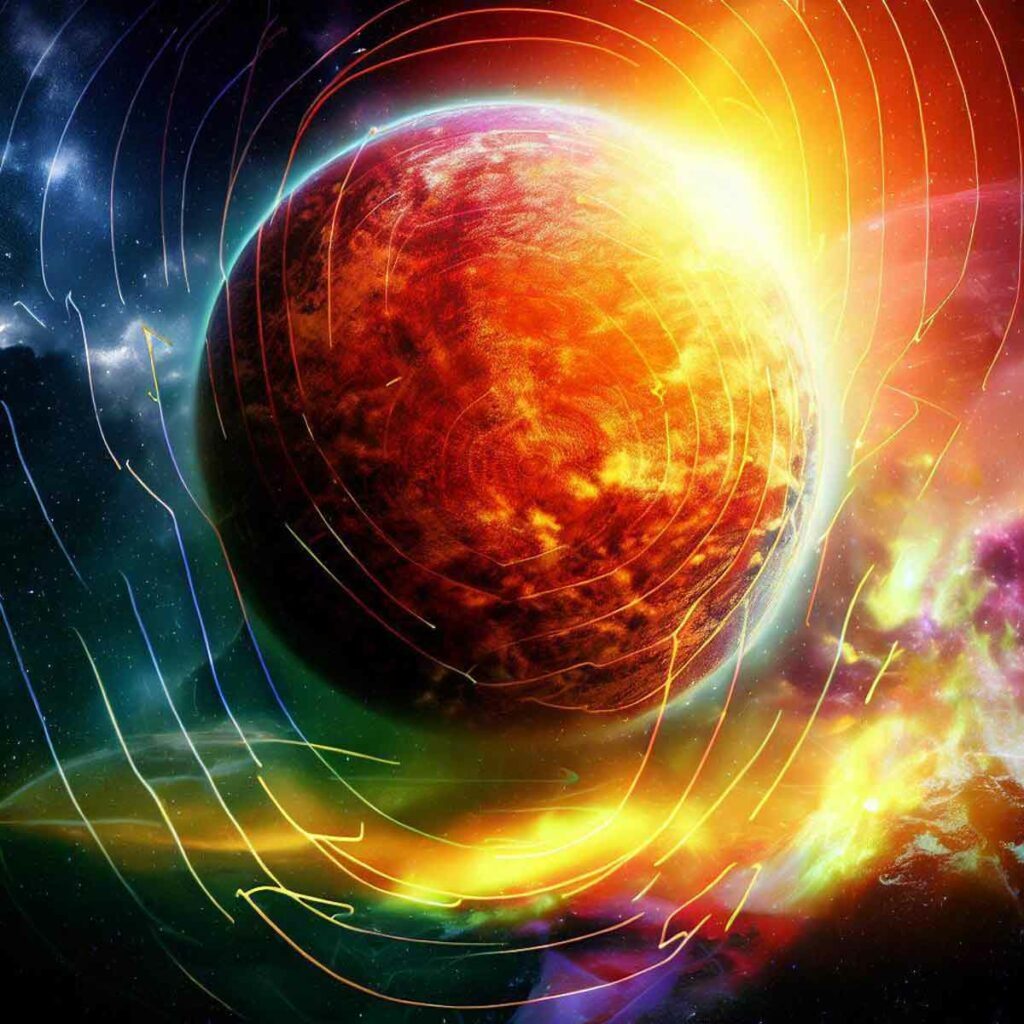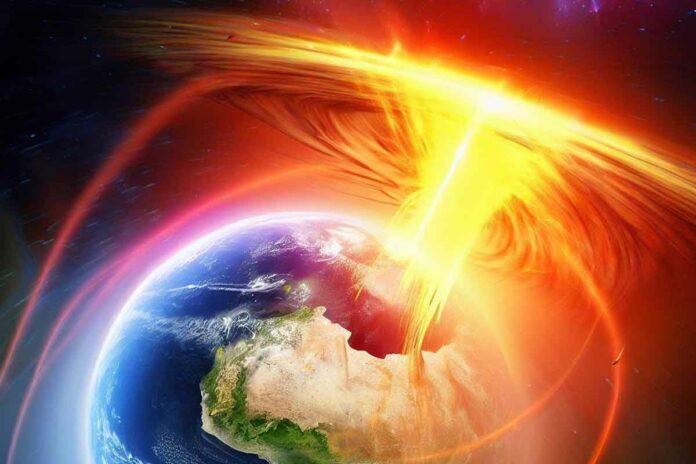Discover the impact of space weather on Earth, including solar flares and geomagnetic storms.
Learn how these phenomena can disrupt communication networks, satellite operations, and power grids. Explore space weather forecasting and mitigation strategies to protect our planet.
Introduction
Space weather refers to the environmental conditions in space that can impact Earth and its technological systems.
The study of space weather has become increasingly important as our reliance on technology grows.
This article explores the impact of space weather on Earth, focusing on solar flares and geomagnetic storms.

Understanding Space Weather
What is Space Weather?
Space weather refers to the conditions in space that are influenced by the Sun’s activity.
It encompasses various phenomena, including solar flares, coronal mass ejections (CMEs), and geomagnetic storms.
These events can release massive amounts of energy and affect Earth’s magnetosphere and ionosphere.
The Sun’s Role in Space Weather
The Sun is the primary source of space weather events. Its intense magnetic activity drives the formation of solar flares and CMEs.
Solar flares are sudden releases of energy in the form of electromagnetic radiation, while CMEs are massive eruptions of plasma and magnetic fields.

Solar Flares and their Effects
Definition and Causes
Solar flares are powerful bursts of radiation that occur near sunspots, which are regions of intense magnetic activity on the Sun’s surface.
These flares are caused by the rapid release of magnetic energy stored in the Sun’s atmosphere.
The energy released during a solar flare can be equivalent to millions of hydrogen bombs exploding simultaneously.
Impact on Earth
Solar flares can have several effects on Earth.
They can disrupt radio communications, interfere with satellite operations, and cause power grid fluctuations.
In extreme cases, solar flares can induce geomagnetic storms, which have the potential to damage electrical infrastructure and affect sensitive electronic devices.

Geomagnetic Storms and their Consequences
Overview and Triggers
Geomagnetic storms are disturbances in Earth’s magnetosphere caused by the interaction between the solar wind and Earth’s magnetic field.
They are often triggered by CMEs impacting the Earth. When a CME collides with Earth’s magnetic field, it can cause rapid changes in the field’s orientation and strength, leading to a geomagnetic storm.
Effects on Earth
Geomagnetic storms can produce a range of effects on Earth. They can disrupt satellite operations, induce electric currents in power grids, and create beautiful auroras at high latitudes.
However, severe geomagnetic storms have the potential to damage or destroy critical infrastructure, including communication and navigation systems.

Space Weather Forecasting and Mitigation
Predicting Solar Flares and Geomagnetic Storms
Efforts are underway to improve space weather forecasting capabilities.
Scientists monitor the Sun using various instruments to detect and track solar flares and CMEs.
By analyzing the data and employing sophisticated models, they can make predictions about the likelihood and severity of upcoming space weather events.
Protecting Earth’s Systems
Mitigating the impact of space weather on Earth requires a multi-faceted approach.
This involves improving infrastructure resilience, implementing early warning systems, and developing strategies to protect critical systems from the effects of solar flares and geomagnetic storms.
Cooperation between scientific organizations, government agencies, and technology industries is crucial in this endeavor.
Conclusion
Space weather has a significant impact on Earth and its technological systems.
Solar flares and geomagnetic storms can disrupt communication networks, satellite operations, and power grids, highlighting the need for improved space weather forecasting and mitigation strategies.
By understanding these phenomena and taking appropriate measures, we can minimize the adverse effects of space weather on our planet.
FAQs
Solar flares are caused by the rapid release of magnetic energy stored in the Sun’s atmosphere, specifically near sunspots.
While solar flares do not directly affect human health, their impact on technological systems can have indirect consequences on various aspects of daily life.
Yes, astronauts in space can be exposed to higher levels of radiation during geomagnetic storms. Adequate shielding and monitoring systems are in place to ensure their safety.
Yes, scientists and organizations continuously monitor space weather and provide alerts and warnings for upcoming solar flares and geomagnetic storms.
The duration of a geomagnetic storm can vary. Some storms may last only a few hours, while others can persist for several days.

